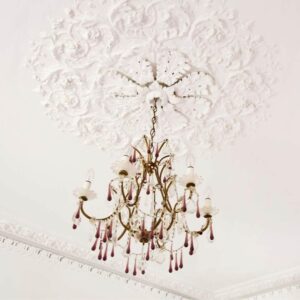Choosing the perfect interior lighting solutions for your home can seem simple at first, but the reality is that once you enter a showroom brimming with an array of options, the process can become quite daunting. To avoid creating a dimly lit area that does not fulfill your needs, it is vital to have a comprehensive understanding of the specific lighting requirements for each room in your home. This foresight will ensure that you achieve the desired ambiance and functionality in every space.
Enhance Your Home’s Usability by Making Informed Lighting Selections
Before you begin your lighting adventure, it’s essential to ask yourself some critical questions that will guide your decisions:
What specific activities will occur in the space, and how will it be utilized throughout various times of the day?
Understanding how each room will be used at different times can significantly influence your lighting strategy. For example, living rooms often serve multiple functions, and integrating a diverse range of lighting solutions can foster a more flexible and efficient atmosphere, allowing you to transition seamlessly from entertaining guests to enjoying quiet evenings.
To effectively light your home, it is crucial to understand the basic categories of lighting and how to layer them appropriately. The three main types to consider are:
1. Ambient (General) Lighting
2. Task Lighting
3. Accent Lighting
Maximize Your Room’s Potential with Ambient or General Lighting
Ambient lighting establishes the overall brightness in a room, providing the essential illumination needed for safe navigation and visibility. This type of lighting is usually the first source you switch on upon entering a space and tends to remain on during your stay. It creates a welcoming environment that encourages comfort and relaxation.
Utilizing energy-efficient LED bulbs is a smart choice, as they reduce energy consumption while delivering ample brightness. Ambient lighting serves as the backbone of your home’s lighting design, setting the stage for the other lighting types to shine.
This type of lighting is foundational to your home’s overall ambiance.
While individual fixtures like floor and table lamps can enhance your space, ambient light is predominantly generated through overhead fixtures such as:
- Recessed lighting
- Track lighting
- Chandeliers
- Ceiling fans
- Area lights
When selecting light bulbs for your ambient lighting, prioritize lumens over watts. Traditionally, people equate brightness with wattage, which actually measures energy consumption. With the availability of energy-efficient options like CFLs and LEDs, focusing on lumens will give you a more accurate measurement of brightness.
Customize Your Lighting Selections to Suit Your Unique Space
For homes with high ceilings or areas like islands and dining spaces that require additional lighting, suspended or pendant fixtures are ideal choices. Ensure that these pendant lights are hung no lower than 75cm (30 inches) from countertops or tables to maintain an unobstructed view.
Additionally, it’s crucial to consider your space’s dimensions when selecting pendant lights. In smaller rooms, opt for lighter, more compact fixtures, whereas larger areas can accommodate bolder, more substantial lighting options without compromising on aesthetics.
If your space requires extra illumination, don’t hesitate to introduce additional light sources to create a bright and inviting environment that meets all your lighting needs.
Choosing the Right Lumen Output for Your General Lighting Needs
When it comes to general lighting, the brightness in a room does not need to be as intense as what is necessary for task or accent lighting. Your electrician can help you calculate the appropriate lumen output necessary for achieving optimal illumination in your space.
Often, a single light fixture equipped with the right bulb can suffice for general illumination, but you can also enhance your lighting setup by adding more fixtures or opting for recessed downlights for a more even distribution of ambient light.
When considering recessed lighting, aim for approximately one fixture for every 4 square feet of ceiling space to ensure that your lighting adequately covers the entire area.
Boost Your Activities with Thoughtful Task Lighting Solutions
Think about the activities that require focused lighting, such as reading in bed, cooking in the kitchen, engaging in craft projects, or applying makeup in the bathroom. This specialized lighting, known as task lighting, is designed to illuminate specific areas where concentrated light is essential.
Task lighting can come from a variety of sources, including spotlights, recessed lights, desk lamps, and table lamps, providing the necessary brightness to support a wide range of activities efficiently.
Essential Tips for Implementing Effective Task Lighting
While brightness is crucial, task lighting should not flood the entire room with light. Seek out fixtures that offer adjustability, such as those with dimming capabilities or movable arms that can be positioned to suit various tasks effectively.
Choosing the Ideal Color Temperature for Your Light Bulbs
When selecting your light bulbs, it’s important to consider the color temperature. Warmer bulbs are perfect for evening reading sessions, while cooler bulbs create an ideal environment in spaces like bathrooms, mimicking natural daylight for makeup application.
Placement is equally critical; desk and table lamps should be adjustable and directed downward to focus light on your tasks while minimizing glare and shadows. Ideally, these lamps should be positioned at the side of your workstation for optimal effectiveness.
Using Accent Lighting to Showcase Key Features in Your Home
Creative Ways to Utilize Accent Lighting
Accent lighting is crucial for highlighting artwork, plants, and architectural features, as well as serving decorative purposes. This type of lighting, often referred to as directional lighting, is specifically designed to draw attention to focal points within a space.
It effectively emphasizes specific features, such as a breathtaking piece of art or an intriguing plant, while gently illuminating architectural elements like wall textures or decorative moldings.
Well-designed accent lighting should channel at least three times the amount of light to the focal point compared to the surrounding areas of the room, allowing the featured item to shine without making the lighting itself the center of attention.
When implementing accent lighting, focus on aesthetics rather than functionality. Additionally, consider the impact of natural light; your room may receive plenty of daylight, leading you to underestimate the need for adequate ambient lighting during the evening hours.
Incorporating dimmers can enhance flexibility, allowing you to adjust the lighting to fit your specific needs and preferences throughout different times of the day.
Creating Effective Lighting Solutions for Your Kitchen
The kitchen is often regarded as the heart of the home, where family and friends gather not only to cook and enjoy meals but also to engage in a variety of activities together. Therefore, it necessitates a thoughtful combination of different lighting types to cater to its multifunctional nature.
A common pitfall in kitchen lighting design is relying on a single light source or a basic track lighting system, which can lead to inconsistent illumination, glare, and shadows on work surfaces. To maximize your kitchen’s functionality, it is essential to adopt flexible lighting solutions with strategically placed fixtures that enhance usability both during the day and at night.
Task and accent lighting work in harmony to supplement natural light during daytime hours while ensuring general illumination is present throughout the evening. Given that kitchen lighting is often left on longer than in other areas of the home, upgrading to energy-efficient bulbs such as CFLs or LEDs can significantly reduce heat output, making them ideal for under-cabinet and task lighting.
Task lighting is particularly important for providing concentrated illumination where it is most needed in the kitchen, ensuring that you can carry out food preparation and other tasks effectively.
Key areas that greatly benefit from task lighting in the kitchen include:
- Countertops
- Islands
- Sinks
- Stovetops
- Inside cabinets and drawers
- Under-cabinet lighting
Enhancing Functionality with Under-Cabinet Lighting Solutions
Under-cabinet lighting serves as an effective method for providing targeted task lighting, illuminating areas where it is needed most without casting unwanted shadows that can hinder your work.
Many kitchen surfaces, including granite and marble, are highly reflective. Therefore, it’s crucial to select under-cabinet lighting that offers a diffused light source to reduce glare, such as LED strips directed toward the wall to create a warm and inviting glow.
Incorporating Stylish Suspended Lighting for Dual Purpose
Pendant lights can fulfill both aesthetic and practical roles within a kitchen setting. They provide ambient light that radiates in all directions, and when thoughtfully positioned, these fixtures can also serve as stylish task lighting over areas like your kitchen island or sink, enhancing both functionality and design.
Utilizing Recessed Lighting for Optimal Coverage
Recessed lighting is an excellent choice for spaces with lower ceilings. If you choose to incorporate recessed fixtures, it’s important to install them close enough to cabinets to provide functional overhead lighting where you’ll be working; otherwise, you may find yourself battling shadows on your countertops.
Aim to place the lights approximately 60cm from the walls, ensuring that the center of the light beam effectively illuminates the edges of the countertops for a well-lit and functional cooking area.
Adding Accent Lighting to Enrich Your Kitchen Design
Incorporating accent lighting in the kitchen is a fantastic way to highlight features such as wall art or decorative items on countertops, adding character and visual appeal to the space.
There are numerous creative methods to integrate accent lighting into your kitchen design:
Consider utilizing LED light strips under cabinets or incorporating baseboard lighting. Additionally, if your kitchen boasts high ceilings, pendant lights or wall sconces positioned above the sink can provide both accent and task lighting, enhancing the overall atmosphere.

Crafting a Welcoming Living Room Space with Thoughtful Lighting
The living room serves as a central gathering space for family members and is often one of the first areas guests encounter. It is essential to ensure it is well-lit, taking into account both functionality and aesthetics to foster a warm and inviting atmosphere.
The lighting in this room must support various activities, including reading, socializing, or enjoying a movie together. If your living room features a television, it is advisable to avoid placing ceiling lights directly above or in front of the screen, as this can create distracting glare and hinder your viewing experience.
Instead, opt for accent lighting that can be dimmed or easily turned off, enhancing your viewing experience by preventing light from interfering with darker scenes on screen.
Innovative Ideas to Elevate Ambient Lighting in Your Living Room
Incorporate a large central ceiling light, such as a beautiful chandelier or pendant fixture, to act as a stunning focal point in your living room. If you choose to utilize multiple light sources, ensure they are evenly distributed throughout the space to avoid overly bright spots and harsh shadows.
Using opaque lampshades and frosted glass diffusers can effectively balance the lighting, creating a softer glow that enhances the overall ambiance. For entertaining guests, appropriate ambient lighting is crucial; warm-toned, dimmable bulbs contribute to a cozy atmosphere that encourages conversation and relaxation.
Enhancing Focus with Targeted Task Lighting Solutions
Task lighting is designed to produce bright, focused light that enhances visibility for specific activities, providing essential relief for your eyes. For avid readers or hobbyists, the right lighting allows you to concentrate on your work while significantly reducing eye strain.
Lamps that offer adjustable brightness and positioning are the most effective sources of task lighting. Look for lamps with dimming options or those that provide multiple brightness levels to cater to various tasks and preferences.
Strategically position task lamps at desks, hobby tables, and beside your favorite reading chair to enhance the room’s functionality and comfort.
Creating Visual Interest Through Accent Lighting
Accent lighting is vital for adding visual interest and highlighting key features in your living room. Use it to draw attention to artwork, architectural details, or decorative elements such as textures and mouldings, transforming your space into a captivating environment.
Showcasing Cabinets and Shelves with Effective Lighting Techniques
Illuminating open shelves or cabinets is an excellent way to showcase cherished items, such as china, glassware, or decorative pieces. Consider using fairy lights or LED strips in display cases and on bookshelves to subtly highlight your collections.
You can also hang fairy lights around houseplants to create enchanting pockets of light, adding a magical touch to your living space while enhancing its overall charm.
To assist in planning your home lighting effectively, consult a qualified electrician who specializes in lighting design and can provide valuable insights tailored to your unique space.
The Article Interior Lighting Options For Your Home was found on https://limitsofstrategy.com
The Article Interior Lighting Ideas to Brighten Your Home First Appeared ON
: https://ad4sc.com



Your thoughts on the complexity of selecting interior lighting solutions resonate deeply with me. I’ve often found myself staring at countless fixtures in showrooms, feeling overwhelmed by the endless choices available. It’s true: what seems like a straightforward task can quickly become a puzzle as you ponder how each light will function within your unique space.
I completely relate to that feeling of being overwhelmed in showrooms. The sheer variety can be paralyzing—each fixture seems to have its unique charm, but trying to picture how they fit into your space adds layers to the decision-making process. It’s like standing in front of a puzzle with too many pieces, unsure of how they all come together.
I get what you mean about feeling overwhelmed in showrooms—it can really feel like you’re stepping into a maze of choices. Each fixture does have that unique charm, but the challenge is weaving them together in a way that feels cohesive and true to your space. It almost reminds me of how we approach decision-making in life, doesn’t it?
I completely relate to the challenge of selecting the right lighting—it’s truly an art form! When I was redesigning my home office, I found that thinking about how I would use the space during different times of the day really changed my approach. I opted for a combination of task lighting and soft ambient options, which helps me stay productive in the morning while also creating a cozy atmosphere for evening relaxation.
Ah, the great lighting conundrum! It’s like trying to pick the perfect avocado—so many choices, and yet somehow it’s all just a bit overwhelming. I remember wandering through a showroom once, confidently stating to myself that I just needed a few simple fixtures. Three hours later, I was deep in the philosophical debate of whether a dimmable pendant or an LED recessed light could truly capture the “essence” of my living space. Spoiler: I bought a string of fairy lights instead, because who doesn’t want to feel like they’re always hosting an outdoor soirée?
You’ve pointed out a crucial aspect of home design that often gets overshadowed by more aesthetic choices: the functional side of lighting. It’s interesting how the role of lighting extends beyond mere visibility; it can shape the atmosphere of a room and influence our mood and productivity. For instance, I’ve found that the right lighting in a workspace can significantly affect concentration and creativity. Utilizing adaptive lighting solutions, such as dimmers or smart bulbs that adjust based on natural light, can enhance these effects even further.